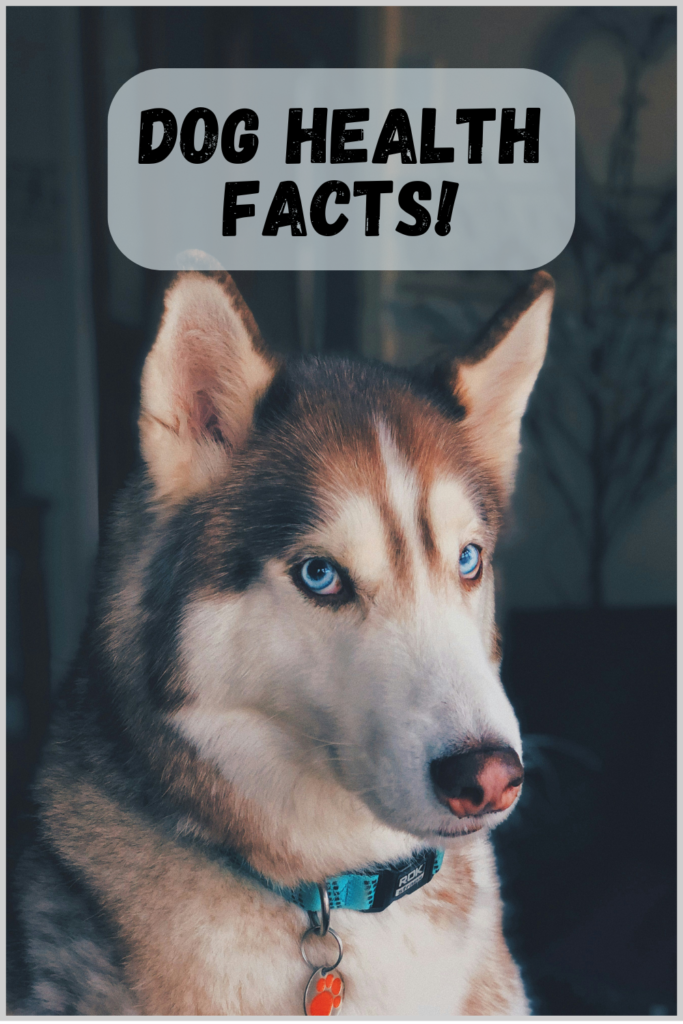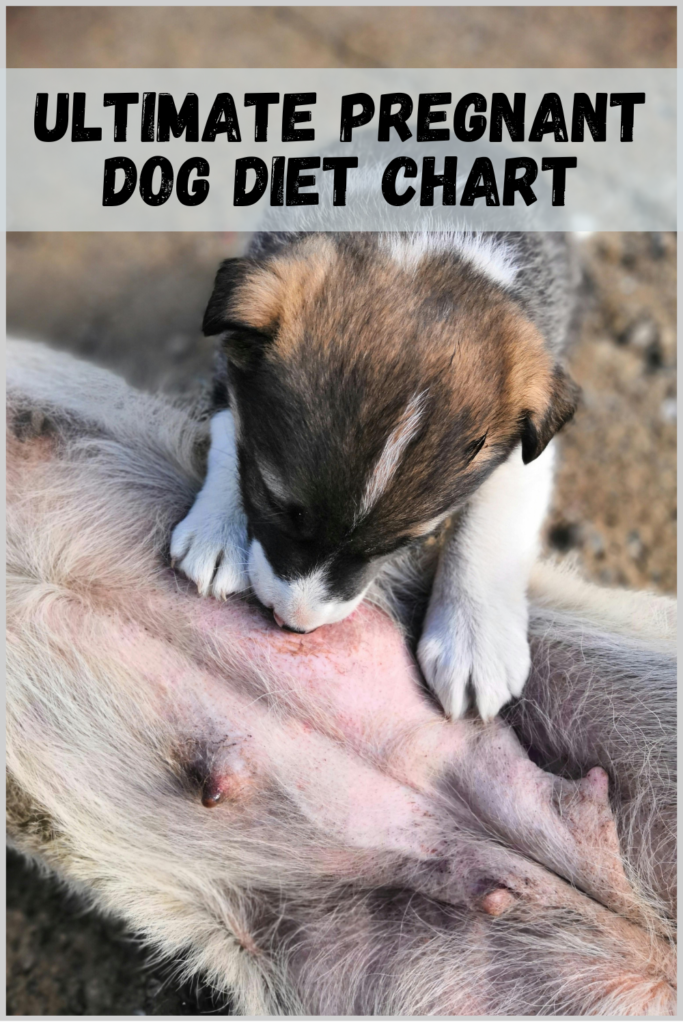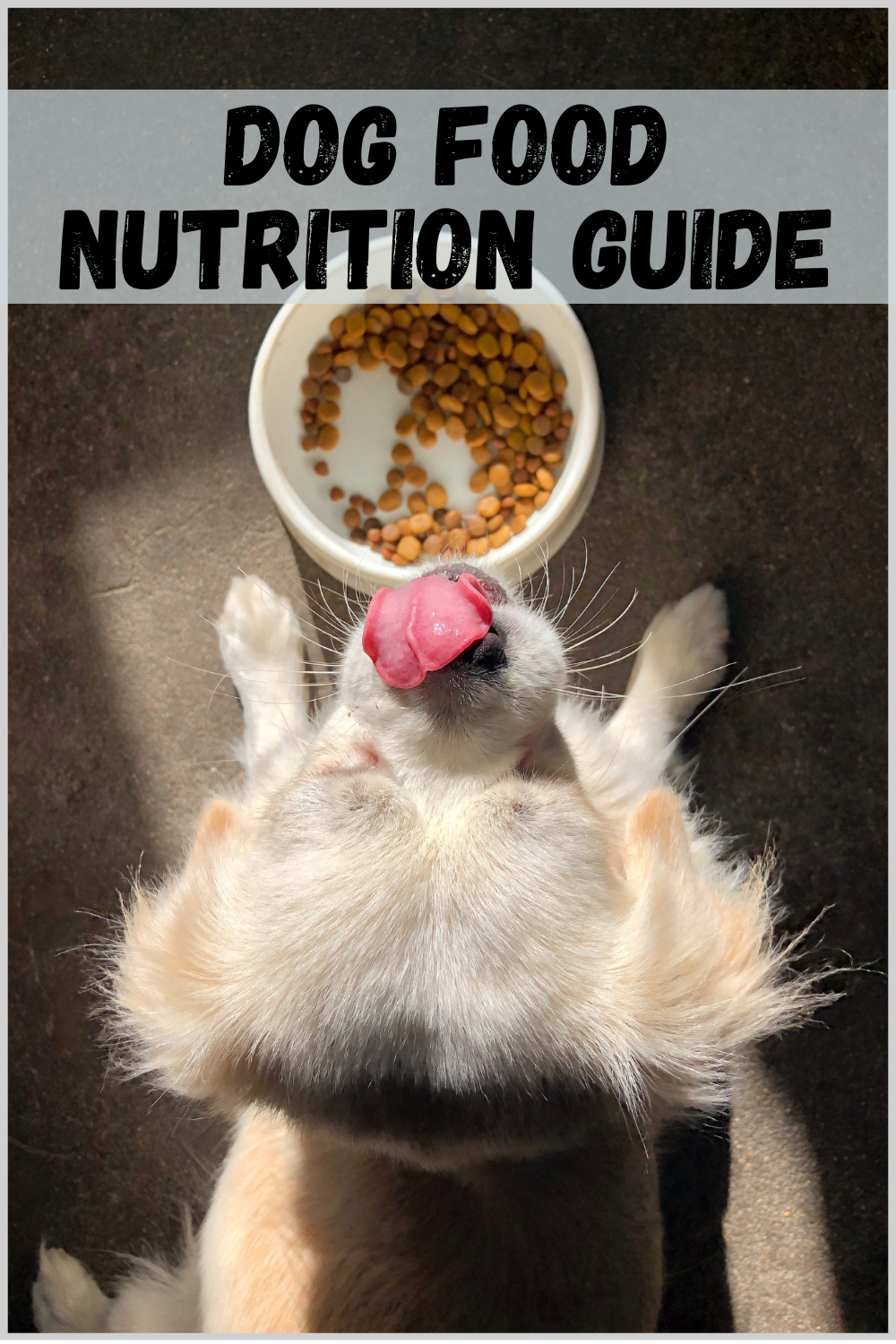
Dog Food Nutrition Guide: 9 Q&A to Help Choose the Right Food
Are you confused about which dog food is right for your dog? Don’t worry, I think everyone, myself included, goes online internet and walks away half-confident in their choice. This dog food nutrition guide will help guide you through some common questions when finding the right food for your dog!
First and foremost, there is no right or wrong when it comes to choosing dog food. In 2 years, a different brand/food may be better for your dog, and that’s okay! As you’ll see, there are many factors to consider when choosing a specific food brand, including your lifestyle choices.
Secondly, always do your due diligence with the specific dog food brand you end up choosing. Don’t let others tell you one brand is better than another. It really comes down to preference, price, and what fits with your schedule. Plus, everyone is trying to sell you their own food, so don’t be fooled by all the ads! Make sure to do your own research on the brand!
As always, we strive to bring you up-to-date, research-based information on dog diet, health, and nutrition to give your best friend the long life they deserve. <3
This post will go over 9 questions to ask yourself before buying the right dog food for your pup!
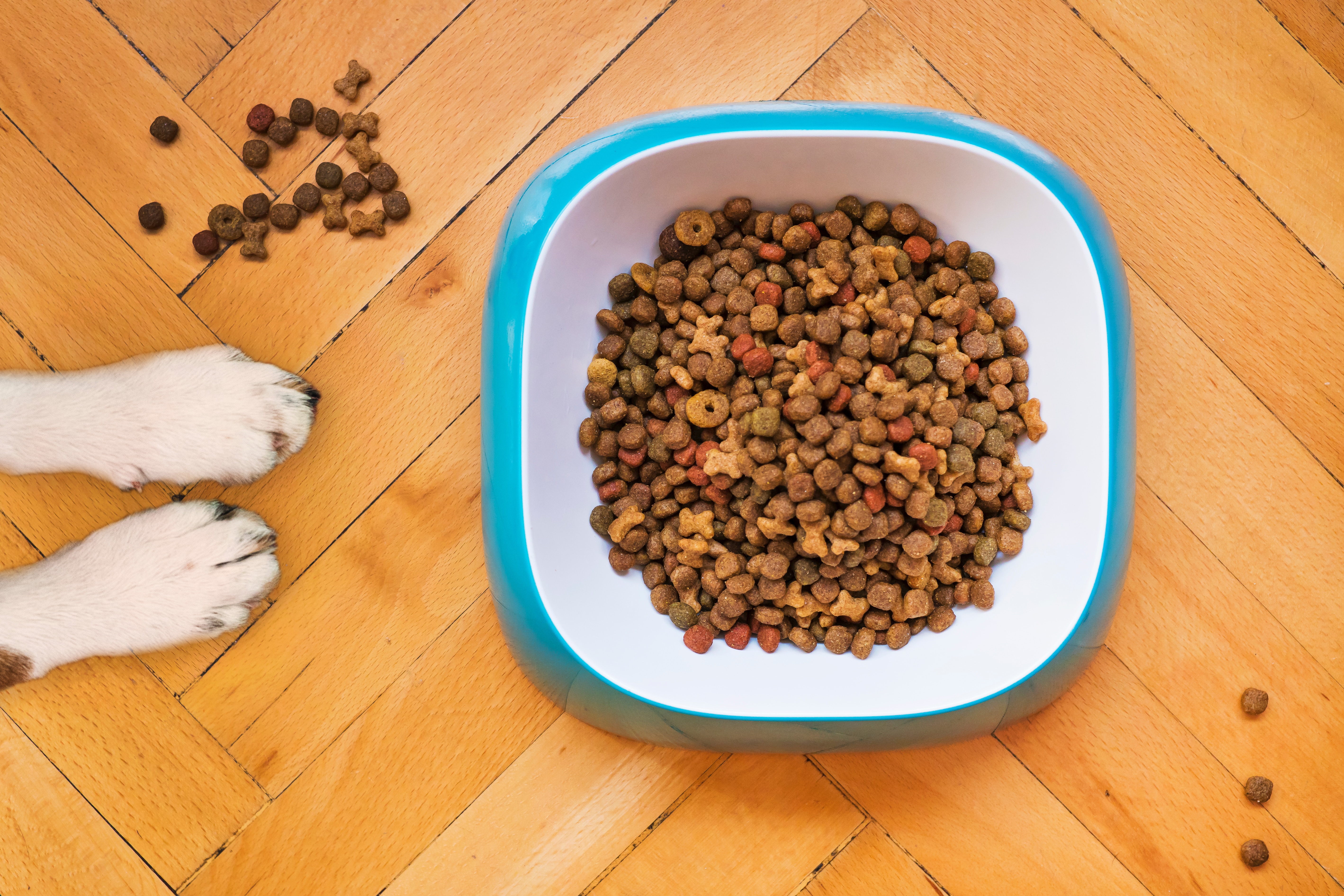
#1: Are they considered a large or small breed dog?
This one does play a big role. A large dog will need a completely different nutrient profile compared to a small dog. Joint pain is common in large dog breeds, so their food will have more ingredients related to musculoskeletal maintenance.
If a specific brand does not have differing recipes, it is something worth noting. Most dry dog food brands will have this, but many of the ‘fresh’ or ‘delivered to you’ food brands have set recipes, varied by amount for large vs small breeds. This means you will need to add additional supplementations related to your dog breeds needs.
#2: How old are they?
You must also factor in their age and life stage when finding the right food. What a puppy needs during their developmental stages is drastically different from what a senior dog needs. A senior dog who has joint issues does not need more nutrients to help their brain and body develop properly. Moreover, an energetic adult dog does not need the decrease in calories that are often factored into senior dog food!
If the brand you are looking into does not have different recipes for puppies, adults, and seniors, that is definitely a red flag to consider. They should not eat the same recipe their entire lives.
#3: What type of food do you prefer?
This pertains less to your dog, and more to you, though still extremely important. Choosing the right type of food to feed your dog comes down to a few things: how much energy, price, and storage space you are willing to put in.
There are 3 types of food groups: dry, wet, and fresh food.
- Dry: goes through an extreme cooking process with the most nutrients lost per serving, minimal effort, least expensive, storage must be in a sealed container
- Wet: still processed but fewer ingredients lost per serving, more effort with preparation, often more expensive than dry food, must be stored in the fridge once opened
- Fresh: minimal processing with most nutrient uptake per serving, most effort, most expensive, must be stored in the fridge once opened and freezer for storage. The amount of space in your fridge is no joke, especially if you choose to raw fresh food. Per safe raw handling practices, they should not be around other fresh foods.
- This can be sub-categorized into homemade or shipped directly to your food. This will depend on the effort and time you are willing to put in. If you don’t have time to analyze each homemade recipe, I recommend directly to your door options, like Farmers Dog or Ollie. Homemade diets, if not created to be complete and balanced, can cause more harm than damage. Each recipe must have ALL of the minimum nutrients your dog needs, which is often not the case. In a study with 80 dogs, EVERY. SINGLE. RECIPE. had a nutrient deficiency.
As you can tell, there are many pros and cons to each! What you choose now is not a permanent decision either. You can choose to give dry dog food now while figuring out your life, and switch to fresh food when you feel ready (like me TBH!). We tried Farmer’s Dog while living in an apartment, and boy… did we struggle with the mailman and the front door. Let’s just say, a lot of spoiled food during that trial period. But, when we got a house, it just made more sense to start!

#4: How much are you willing to spend?
Okay, let’s get real here… Raising a dog is expensive, PERIOD. From food to toys to vet visits, it can be hard trying to pay for everything, and that’s okay! Dry dog food will be your most affordable option, and fresh food, directly shipped to you, will be the most expensive.
When we tried Farmer’s Dog for our 70 lb bernedoodle, we were paying over $200+ per month. Whereas, a good kibble brand with some additional joint supplementation & probiotics was around $70 a month. However, you do obviously trade quality for price.
Although, what you feed your dog now does not mean they are going to eat that for the next 7-10 years. Do what works best for both you and your furry friend right now. <3
#5: What feeding style fits you and your dog’s lifestyle?
There are many feeding styles, including free feeding vs scheduled feeding. Scheduled feeding is generally the recommended type, as free feeding can cause issues like overeating or picky eating. However, not everyone has the luxury of being home or feeding their pup at exact times every day. Therefore, some will need to do free feeding, which is where you leave food out for your dog to eat throughout the day.
If you choose to do free feeding, your options become limited to dry dog food. Leaving wet or fresh food out for hours is unsanitary and should not be left out to spoil.
#6: Do you prefer to handle cooked or raw food?
When it comes to fresh food, they will not fuss over the taste of raw or cooked food. Most of the time, giving them any fresh food is yummy, raw or cooked! However, choosing between cooked and raw foods depends on a few other factors.
There has been a fierce debate in the dog nutrition world about cooked versus raw food. And to be honest, it all comes down to preference, time, and energy. Raw food has a time and place for the informed, well-educated dog owner. But the many others who can’t afford the time to stay informed might do better with cooked food. Some issues related to raw food include safe handling practices or microbiological hazards with potential transmission to humans. As well as, not creating a complete and balanced diet with nutrient deficiencies important for their health.
We are seeing an increase in brands creating complete and balanced raw food that can be directly shipped to you. Brands like Maev look promising for those who can’t make homemade raw food, but know their pups might benefit from a raw food diet!

#7: Do you prefer a big brand or a boutique brand?
There are many reasons to question whether a big brand or a boutique brand is right for your dog. A few big brands are Hill’s Dog Food and Purina. If you look on their websites, you will find LOADS of options for your dog based on your specific needs. The companies themselves fund much of the research for their dog food. To me, this seems like a big conflict of interest…
There is tons of research to prove that their dog food works, yet not too many articles say that other types of dog food work as well. However, if this does not bother you, these big brands could be the right dog food for you! At the end of the day, there is a lot of science to back up their recipes. They can fit very specific needs your dog might have to allergies or food sensitivities, that other boutique brands can’t.
Knowing that information, boutique or smaller brands often get a bad rep. Some brands are very nutrient-packed and beneficial for your pup’s health. Any food that is not considered a big-name brand is categorized as a Boutique, Exotique, or Grain-Free (BEG) diet. The main thing to look at is the ingredient list and brand itself (which we will go into detail more about below!)
#8: Do you know what to look for in the ingredient list for good dog food?
First and foremost, the American Association of Feed Control Officials (AAFCO) regulates most dog foods on the market. There is no stamp of approval, but you can only brand and label your product as “complete and balanced” if it follows the AAFCO guidelines. Therefore, ALWAYS choose a brand that says they are “complete and balanced” or is based on the AAFCO guidelines. Though, following the AAFCO guidelines is great, it is far from being a good dry dog food. AAFCO regulates having the MINIMUM of each nutrient to survive, not thrive.
Moreover, every ingredient is generally recognized as safe (GRAS), so nothing on there is too out of the blue.
Just like our own food labels, the first few ingredients are the ingredients that are most prominent and take up more percentage of the food. You want to look for whole meat proteins and even meat meals. Since whole meat proteins have a high water content, meat meals actually give more protein per serving.
There is also this misconception that your dog’s food should not have byproducts. Yes, your dog’s food should not have fillers like wheat or soy, but animal by-products like liver, hearts, and other organs can be a great source of vitamins and nutrients. Giving liver to your dog, in the proper dosage, is like a natural multivitamin for them!
There are also a lot of weird-looking names at the bottom. They usually do not make any impact on your dog’s health and are all considered GRAS. Some are there to help preserve the food, but less of those weird words, the better.
#9: Do they have any known allergies?
Do they have symptoms of allergies or have any known allergies? If so, this will dictate what ingredients you should have in your foods. If your dog has severe allergies, you will want to look for limited-ingredient food options, which don’t include common dog allergens like chicken, dairy, beef, soy, or wheat. Hills Dog Food and Nutro are a few dog food brands that work well with specific allergies.
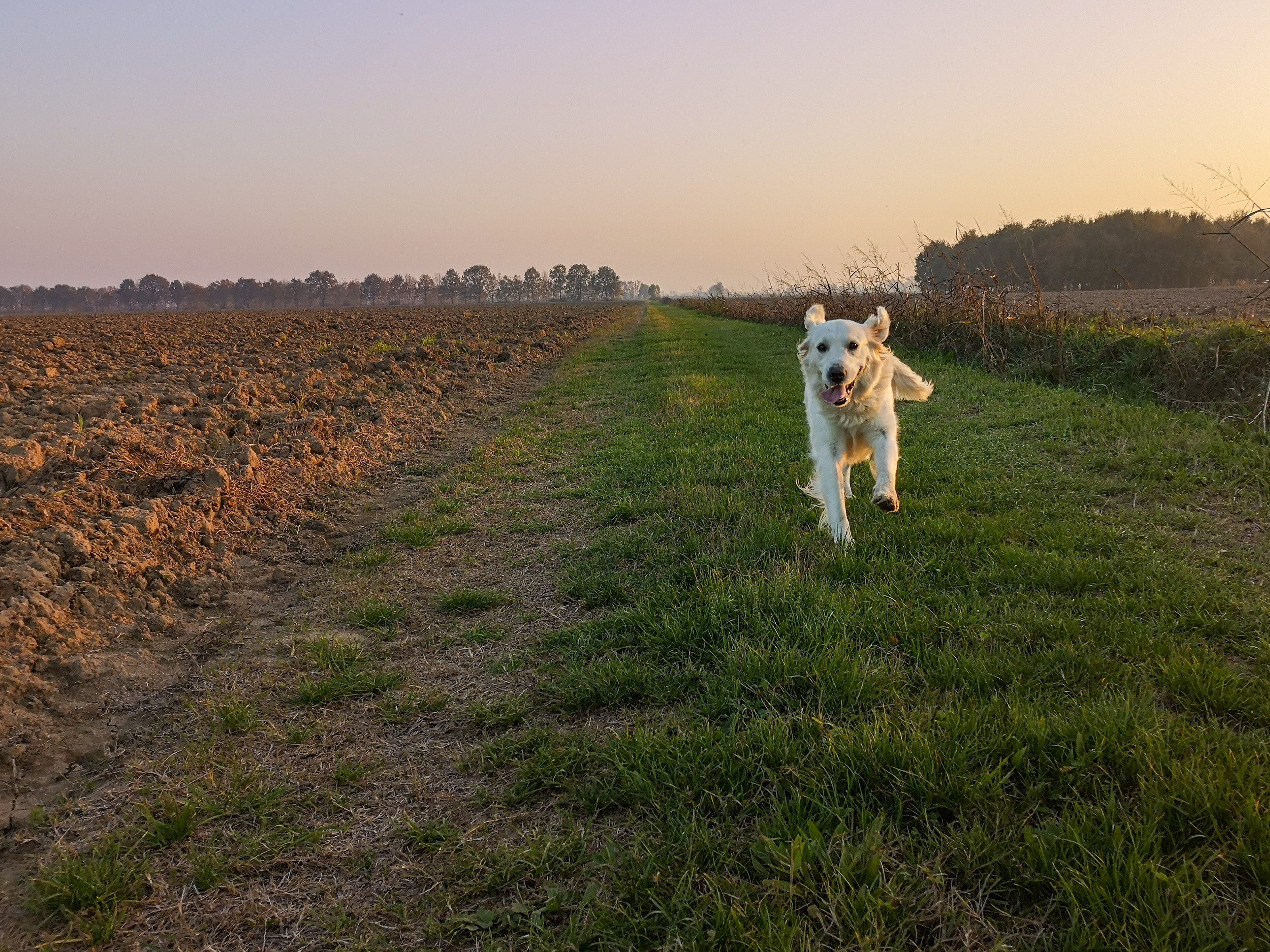
Conclusion
There are many factors to consider when looking for the right dog food. Hopefully, this dog food nutrition guide helped narrow down your options and learn more about what to look for. Again, the dog food you choose now will most likely not be the dog food your dog will eat for their entire lives. What works for you and your lifestyle now might change 3 years from now, and that’s okay! As long as you continue to learn, grow, and do the best you can for your dog, that’s all that matters. They will love you unconditionally, whether you give them the cheapest dry dog food or the highest of the highest quality dog food! <3

